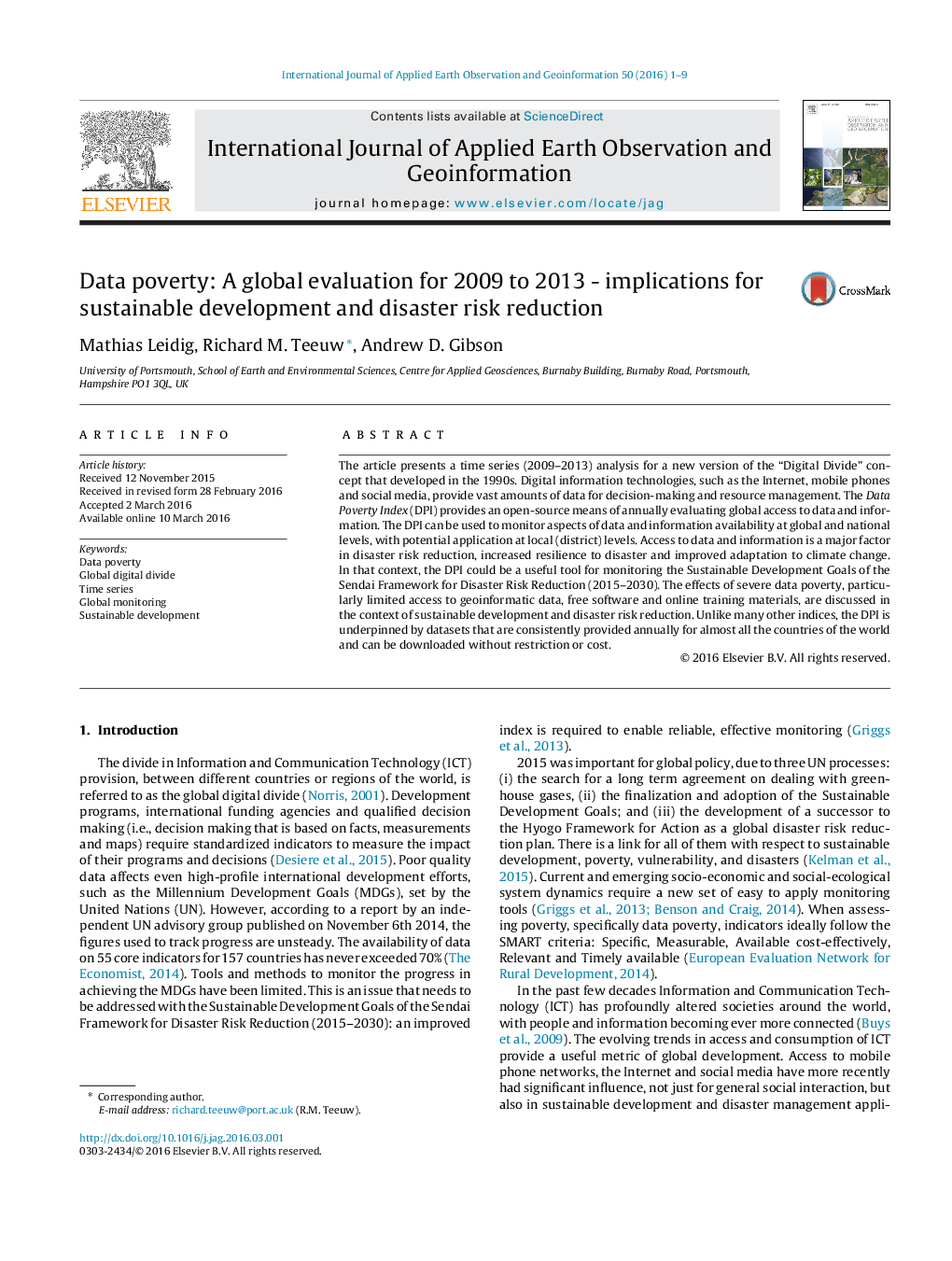| Article ID | Journal | Published Year | Pages | File Type |
|---|---|---|---|---|
| 4464577 | International Journal of Applied Earth Observation and Geoinformation | 2016 | 9 Pages |
•This study is a time series (2009–2013) international evaluation of the “Digital Divide” concept.•The Data Poverty Index (DPI) provides an open-source means of annually evaluating global access to digital data/information.•The DPI can monitor data/information availability at global and national levels, with potential application at district levels.•The DPI could be a metric for monitoring the Sustainable Development Goals of the UN Sendai Framework for Disaster Risk Reduction.
The article presents a time series (2009–2013) analysis for a new version of the “Digital Divide” concept that developed in the 1990s. Digital information technologies, such as the Internet, mobile phones and social media, provide vast amounts of data for decision-making and resource management. The Data Poverty Index (DPI) provides an open-source means of annually evaluating global access to data and information. The DPI can be used to monitor aspects of data and information availability at global and national levels, with potential application at local (district) levels. Access to data and information is a major factor in disaster risk reduction, increased resilience to disaster and improved adaptation to climate change. In that context, the DPI could be a useful tool for monitoring the Sustainable Development Goals of the Sendai Framework for Disaster Risk Reduction (2015–2030). The effects of severe data poverty, particularly limited access to geoinformatic data, free software and online training materials, are discussed in the context of sustainable development and disaster risk reduction. Unlike many other indices, the DPI is underpinned by datasets that are consistently provided annually for almost all the countries of the world and can be downloaded without restriction or cost.
Graphical abstractFigure optionsDownload full-size imageDownload high-quality image (347 K)Download as PowerPoint slide
